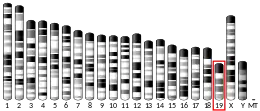| SART1 | |||||||||||||||||||||||||||||||||||||||||||||||||||
|---|---|---|---|---|---|---|---|---|---|---|---|---|---|---|---|---|---|---|---|---|---|---|---|---|---|---|---|---|---|---|---|---|---|---|---|---|---|---|---|---|---|---|---|---|---|---|---|---|---|---|---|
| |||||||||||||||||||||||||||||||||||||||||||||||||||
| Identifiers | |||||||||||||||||||||||||||||||||||||||||||||||||||
| Aliases | SART1, Ara1, HOMS1, SART1259, SNRNP110, Snu66, squamous cell carcinoma antigen recognized by T-cells 1, HAF, U4/U6.U5 tri-snRNP-associated protein 1, spliceosome associated factor 1, recruiter of U4/U6.U5 tri-snRNP | ||||||||||||||||||||||||||||||||||||||||||||||||||
| External IDs | OMIM: 605941 MGI: 1309453 HomoloGene: 133770 GeneCards: SART1 | ||||||||||||||||||||||||||||||||||||||||||||||||||
| |||||||||||||||||||||||||||||||||||||||||||||||||||
| |||||||||||||||||||||||||||||||||||||||||||||||||||
| |||||||||||||||||||||||||||||||||||||||||||||||||||
| |||||||||||||||||||||||||||||||||||||||||||||||||||
| |||||||||||||||||||||||||||||||||||||||||||||||||||
| Wikidata | |||||||||||||||||||||||||||||||||||||||||||||||||||
| |||||||||||||||||||||||||||||||||||||||||||||||||||
U4/U6.U5 tri-snRNP-associated protein 1 is a protein that in humans is encoded by the SART1 gene.[5][6] This gene encodes two proteins, the SART1(800) protein expressed in the nucleus of the majority of proliferating cells, and the SART1(259) protein expressed in the cytosol of epithelial cancers. The SART1(259) protein is translated by the mechanism of -1 frameshifting during posttranscriptional regulation. The two encoded proteins are thought to be involved in the regulation of proliferation. Both proteins have tumor-rejection antigens. The SART1(259) protein possesses tumor epitopes capable of inducing HLA-A2402-restricted cytotoxic T lymphocytes in cancer patients. This SART1(259) antigen may be useful in specific immunotherapy for cancer patients and may serve as a paradigmatic tool for the diagnosis and treatment of patients with atopy. The SART1(259) protein is found to be essential for the recruitment of the tri-snRNP to the pre-spliceosome in the spliceosome assembly pathway.[6]
References
- 1 2 3 GRCh38: Ensembl release 89: ENSG00000175467 - Ensembl, May 2017
- 1 2 3 GRCm38: Ensembl release 89: ENSMUSG00000039148 - Ensembl, May 2017
- ↑ "Human PubMed Reference:". National Center for Biotechnology Information, U.S. National Library of Medicine.
- ↑ "Mouse PubMed Reference:". National Center for Biotechnology Information, U.S. National Library of Medicine.
- ↑ Shichijo S, Nakao M, Imai Y, Takasu H, Kawamoto M, Niiya F, Yang D, Toh Y, Yamana H, Itoh K (Mar 1998). "A gene encoding antigenic peptides of human squamous cell carcinoma recognized by cytotoxic T lymphocytes". J Exp Med. 187 (3): 277–88. doi:10.1084/jem.187.3.277. PMC 2212124. PMID 9449708.
- 1 2 "Entrez Gene: SART1 squamous cell carcinoma antigen recognized by T cells".
Further reading
- Maruyama K, Sugano S (1994). "Oligo-capping: a simple method to replace the cap structure of eukaryotic mRNAs with oligoribonucleotides". Gene. 138 (1–2): 171–4. doi:10.1016/0378-1119(94)90802-8. PMID 8125298.
- Bonaldo MF, Lennon G, Soares MB (1997). "Normalization and subtraction: two approaches to facilitate gene discovery". Genome Res. 6 (9): 791–806. doi:10.1101/gr.6.9.791. PMID 8889548.
- Suzuki Y, Yoshitomo-Nakagawa K, Maruyama K, et al. (1997). "Construction and characterization of a full length-enriched and a 5'-end-enriched cDNA library". Gene. 200 (1–2): 149–56. doi:10.1016/S0378-1119(97)00411-3. PMID 9373149.
- Valenta R, Natter S, Seiberler S, et al. (1999). "Molecular characterization of an autoallergen, Hom s 1, identified by serum IgE from atopic dermatitis patients". J. Invest. Dermatol. 111 (6): 1178–83. doi:10.1046/j.1523-1747.1998.00413.x. PMID 9856836.
- Kikuchi M, Nakao M, Inoue Y, et al. (1999). "Identification of a SART-1-derived peptide capable of inducing HLA-A24-restricted and tumor-specific cytotoxic T lymphocytes". Int. J. Cancer. 81 (3): 459–66. doi:10.1002/(SICI)1097-0215(19990505)81:3<459::AID-IJC21>3.0.CO;2-6. PMID 10209962. S2CID 25853911.
- Matsunaga K, Nakao M, Masuoka K, et al. (1999). "Cytokines required for induction of histocompatibility leukocyte antigen-class I-restricted and tumor-specific cytotoxic T lymphocytes by a SART1-derived peptide". Jpn. J. Cancer Res. 90 (9): 1007–15. doi:10.1111/j.1349-7006.1999.tb00849.x. PMC 5926162. PMID 10551332.
- Ishida H, Komiya S, Inoue Y, et al. (2000). "Expression of the SART1 tumor-rejection antigen in human osteosarcomas". Int. J. Oncol. 17 (1): 29–32. doi:10.3892/ijo.17.1.29. PMID 10853014.
- Shintaku I, Kawagoe N, Yutani S, et al. (2000). "Expression of the SART1 tumor rejection antigen in renal cell carcinoma". Urol. Res. 28 (3): 178–84. doi:10.1007/s002400000103. PMID 10929426. S2CID 12983860.
- Tanaka S, Tsuda N, Kawano K, et al. (2001). "Expression of tumor-rejection antigens in gynecologic cancers". Jpn. J. Cancer Res. 91 (11): 1177–84. doi:10.1111/j.1349-7006.2000.tb00902.x. PMC 5926290. PMID 11092984.
- Sasatomi T, Yamana H, Shichijo S, et al. (2001). "Expression of the SART1 tumor-rejection antigens in colorectal cancers". Dis. Colon Rectum. 43 (12): 1754–8. doi:10.1007/BF02236863. PMID 11156463. S2CID 32717023.
- Makarova OV, Makarov EM, Lührmann R (2001). "The 65 and 110 kDa SR-related proteins of the U4/U6.U5 tri-snRNP are essential for the assembly of mature spliceosomes". EMBO J. 20 (10): 2553–63. doi:10.1093/emboj/20.10.2553. PMC 125249. PMID 11350945.
- Bolland DJ, Hewitt JE (2001). "Intron loss in the SART1 genes of Fugu rubripes and Tetraodon nigroviridis". Gene. 271 (1): 43–9. doi:10.1016/S0378-1119(01)00504-2. PMID 11410364.
- Jurica MS, Licklider LJ, Gygi SR, et al. (2002). "Purification and characterization of native spliceosomes suitable for three-dimensional structural analysis". RNA. 8 (4): 426–39. doi:10.1017/S1355838202021088. PMC 1370266. PMID 11991638.
- Bell M, Schreiner S, Damianov A, et al. (2002). "p110, a novel human U6 snRNP protein and U4/U6 snRNP recycling factor". EMBO J. 21 (11): 2724–35. doi:10.1093/emboj/21.11.2724. PMC 126028. PMID 12032085.
- Wheatley AP, Bolland DJ, Hewitt JE, et al. (2003). "Identification of the autoantigen SART-1 as a candidate gene for the development of atopy". Hum. Mol. Genet. 11 (18): 2143–6. doi:10.1093/hmg/11.18.2143. PMID 12189166.
- Strausberg RL, Feingold EA, Grouse LH, et al. (2003). "Generation and initial analysis of more than 15,000 full-length human and mouse cDNA sequences". Proc. Natl. Acad. Sci. U.S.A. 99 (26): 16899–903. Bibcode:2002PNAS...9916899M. doi:10.1073/pnas.242603899. PMC 139241. PMID 12477932.
- Ota T, Suzuki Y, Nishikawa T, et al. (2004). "Complete sequencing and characterization of 21,243 full-length human cDNAs". Nat. Genet. 36 (1): 40–5. doi:10.1038/ng1285. PMID 14702039.
- Vertegaal AC, Ogg SC, Jaffray E, et al. (2004). "A proteomic study of SUMO-2 target proteins". J. Biol. Chem. 279 (32): 33791–8. doi:10.1074/jbc.M404201200. PMID 15175327.
- Beausoleil SA, Jedrychowski M, Schwartz D, et al. (2004). "Large-scale characterization of HeLa cell nuclear phosphoproteins". Proc. Natl. Acad. Sci. U.S.A. 101 (33): 12130–5. Bibcode:2004PNAS..10112130B. doi:10.1073/pnas.0404720101. PMC 514446. PMID 15302935.




